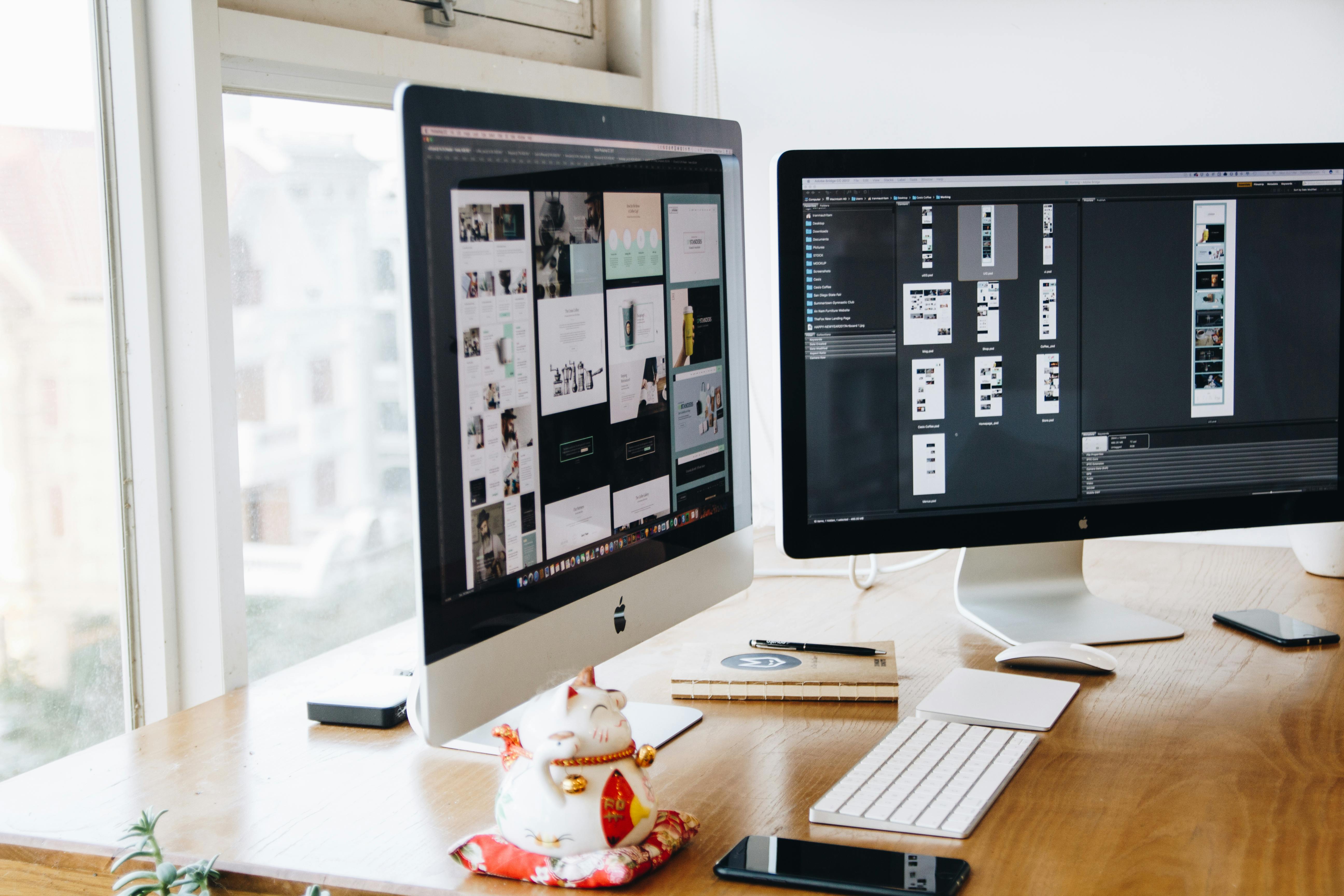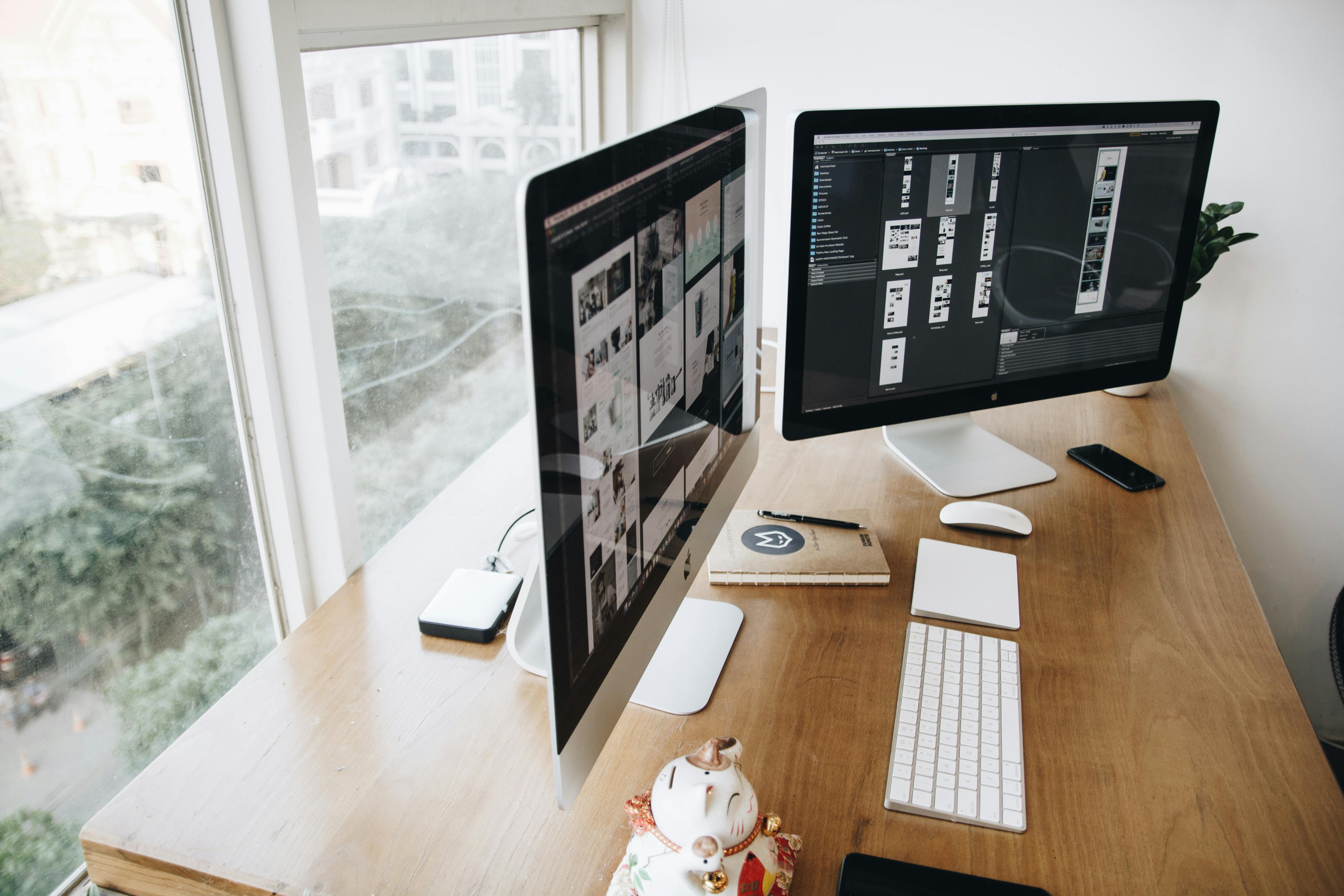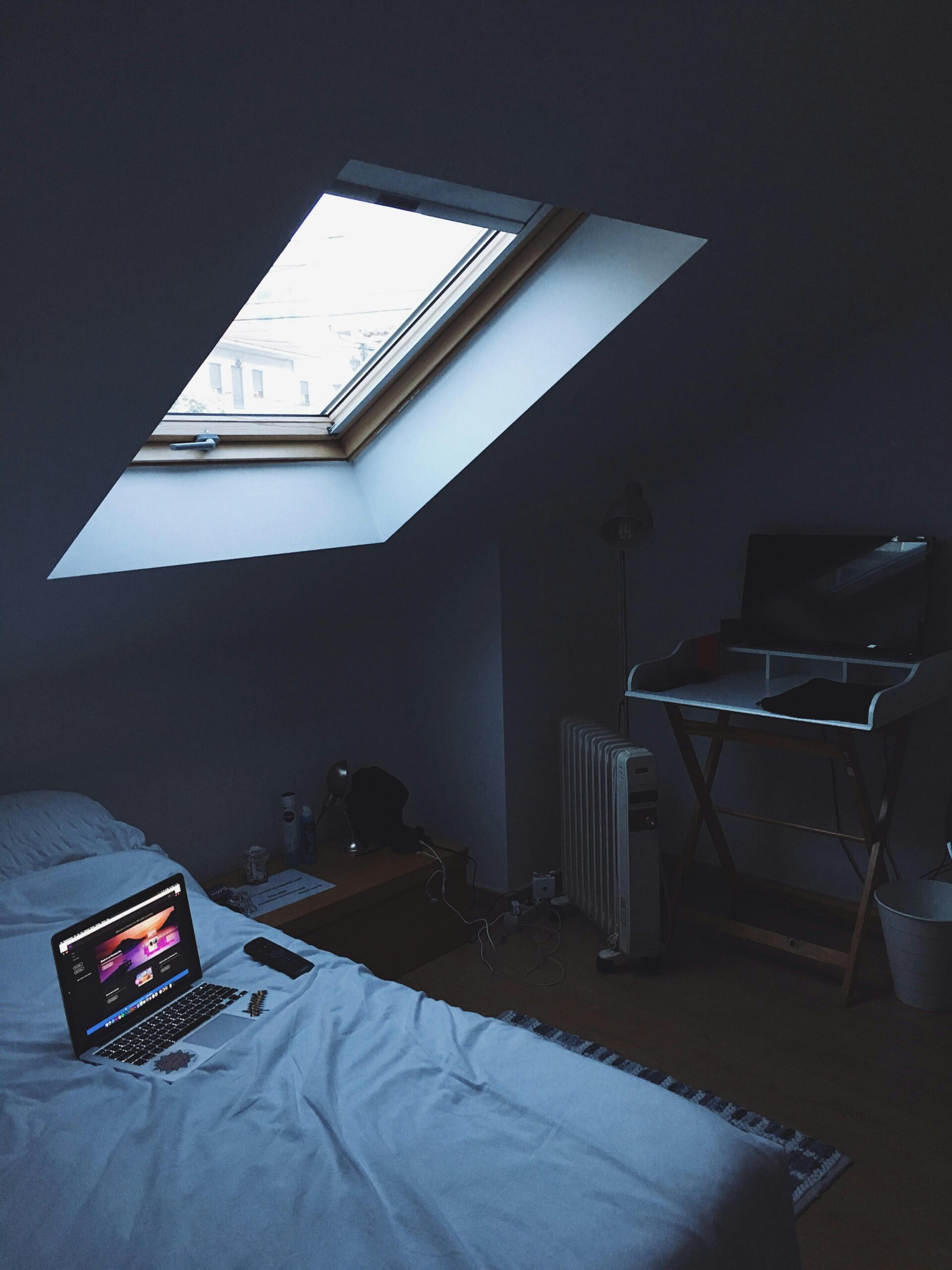Are you ready to boost your productivity with Windows 11’s dual monitor extend feature? If you’re looking to maximize your workspace and enhance your workflow, you’re in the right place! In today’s fast-paced digital world, utilizing multiple screens can revolutionize your work experience. In this article, we will explore how to seamlessly extend your display across two monitors on Windows 11 and the incredible benefits it brings to your daily tasks.
Picture this: you’re juggling multiple applications, your email is buzzing with important messages, and you’re trying to keep track of a project deadline. With the dual monitor setup in Windows 11, you can effortlessly arrange your tasks across two screens, allowing you to multitask like never before. But how do you set it up? Don’t worry, we’ll guide you through the entire process step-by-step.
Imagine the possibilities of having a dedicated space for video calls while simultaneously working on a presentation or researching online! This setup isn’t just for tech enthusiasts; it’s for anyone who wants to work smarter, not harder. Whether you’re a student, a professional, or a creative, extending your display can streamline your tasks and ultimately lead to higher efficiency. So, are you ready to take the plunge into the world of dual monitors? Let’s dive into how you can enhance your productivity today!
Unlock the Secrets: How to Set Up Dual Monitors in Windows 11 for Maximum Efficiency

Setting up dual monitors in Windows 11 can transform your workspace, unlocking a world of efficiency. If you’ve ever found yourself juggling multiple windows on a single screen, you know how frustrating it can be. By extending your display across two monitors, you can boost your productivity significantly. Let’s jump into the steps to set up dual monitors and maximize your Windows 11 experience.
Why Use Dual Monitors?
Using dual monitors is not just a trend; it’s a practical solution for many users. Here are some reasons to consider:
- Increased Screen Real Estate: More space means you can have multiple applications open without overlapping windows.
- Enhanced Multitasking: Easily switch between tasks without minimizing or maximizing windows constantly.
- Improved Focus: With dedicated screens, you can organize your workspace better, reducing distractions.
Setting Up Dual Monitors in Windows 11
Before diving into the setup, ensure that your hardware supports dual displays. Most modern graphics cards and laptops today do. Once you’re ready to go, follow these steps:
-
Connect Your Monitors: Plug in your second monitor into your computer or laptop. Use HDMI, DisplayPort, or VGA cables depending on what your devices support.
-
Access Display Settings: Right-click on your desktop and choose “Display settings.” This opens a window where you can see the connected monitors.
-
Detect Displays: If your second monitor doesn’t show up automatically, click on the “Detect” button. Windows will recognize the new screen.
-
Choose Display Mode: Under the “Multiple displays” section, you can select how you want to use the monitors. Options include:
- Duplicate: Shows the same content on both screens.
- Extend: Expands your desktop across both screens. This is the option you want for maximum efficiency.
- Second screen only: Turns off your main display and uses only the second monitor.
-
Adjust Resolution and Orientation: Make sure both monitors have the correct resolution set. You can also rotate the display if needed.
-
Arrange Your Displays: In the display settings, you will see a visual representation of your monitors. Drag the screens to match their physical layout on your desk. This ensures that moving your mouse cursor feels natural.
Boost Productivity with Dual Monitors
Once your dual monitors are set up, there are ways to boost your productivity further. Here are some tips:
-
Use Snap Layouts: Windows 11 has a feature called Snap Layouts that allows you to organize your open windows easily. Hover over the maximize button to see the layout options.
-
Keyboard Shortcuts: Familiarize yourself with shortcuts like Windows + P to quickly switch between display modes.
-
Taskbar Customization: You can customize your taskbar to show on both monitors or just one. Right-click on the taskbar, go to taskbar settings, and adjust accordingly.
Troubleshooting Common Issues
Sometimes, things don’t go as planned. If you encounter issues, here’s a quick troubleshooting list:
- Monitor Not Detected: Check the cable connections, ensure the monitor is powered on, and try the “Detect” option again.
- Resolution Problems: Right-click on the desktop, go to display settings, and adjust each monitor’s resolution.
- Display Flickering: Ensure your graphics drivers are up to date. You can find updates through Windows Update or the manufacturer’s website.
Setting up dual monitors in Windows 11 isn’t just about aesthetics; it’s about creating a workspace that caters to your needs. With a few simple steps, you can extend your display and enhance your overall productivity. Don’t hesitate to explore the numerous features that Windows 11 offers to make the most of your dual monitor setup. By investing a little time into configuring your workspace, you’ll find that managing your tasks becomes much simpler and more efficient.
5 Proven Tips to Enhance Your Workflow with Extended Displays on Windows 11

In today’s fast-paced digital world, maximizing productivity is essential, especially for those using Windows 11. If you have a dual monitor setup, you can boost your workflow dramatically. Here’s 5 proven tips to enhance your workflow with extended displays on Windows 11. You’ll see how just a few adjustments can transform the way you work today.
1. Adjust Your Display Settings for Optimal Arrangement
First thing, you want to make sure your displays are configured correctly. Go to Settings > System > Display. Here, you can rearrange your monitors to match their physical layout on your desk. If your primary display is on the left, drag it left in the display settings. This simple step can prevent confusion and minimize time spend moving your mouse around.
2. Use Snap Layouts for Easy Multitasking
Windows 11 has this great feature called Snap Layouts. It allows you to organize your windows into neat grids, so you can see multiple applications at once without overlapping. Just hover over the maximize button on any window, and you’ll see several layout options. Choose one that fits your workflow. It’s like having a virtual assistant that organizes your work for you!
- Snap Layouts Options:
- Two side-by-side
- Three in a row
- Grid of four
Using these layouts can save you time by allowing you to view more information simultaneously.
3. Customize Taskbar for Quick Access
Another way to boost your Windows 11 dual monitor extend is by customizing your taskbar. You can choose to show the taskbar on both screens or only on one. To do this, go to Settings > Personalization > Taskbar. From here, select Taskbar behaviors. Having the taskbar on both screens makes switching between apps faster, so you don’t need to keep looking for where your apps are hiding.
4. Utilize Virtual Desktops for Better Organization
Virtual desktops are a great way to keep your work organized. You can create multiple desktops for different projects or tasks. This way, you can switch between tasks without cluttering your view. To create a new virtual desktop, just click on the Task View button on your taskbar or press Win + Tab. Then click “New desktop.” It’s like having separate workspaces without the need for physical space!
- Benefits of Virtual Desktops:
- Organize tasks by project
- Reduce visual clutter
- Increase focus on individual tasks
5. Keyboard Shortcuts to Streamline Your Workflow
Finally, learning some keyboard shortcuts can really enhance your productivity. Windows 11 has many shortcuts that work great with dual monitors. For example, you can use Windows key + Shift + Left or Right Arrow to move windows between screens quickly. This can save time and help you stay focused on your work without interruptions.
Some useful keyboard shortcuts:
- Win + D: Show desktop
- Alt + Tab: Switch between open apps
- Win + P: Project options for additional displays
Implementing these tips can greatly enhance your productivity. By adjusting your display settings, utilizing Snap Layouts, customizing your taskbar, taking advantage of virtual desktops, and mastering keyboard shortcuts, you can boost your Windows 11 dual monitor extend experience.
Remember, enhancing your workflow with extended displays on Windows 11 doesn’t just happen overnight. It takes time to find what works best for you. Experiment with these tips and see how they help you become more efficient and organized in your daily tasks. The possibilities are endless if you leverage the full potential of your dual monitor setup!
Supercharge Your Productivity: The Ultimate Guide to Dual Monitor Setup in Windows 11

Are you tired of constantly switching between windows and losing your train of thought while working? A dual monitor setup might just be the solution you need. In this article, we will explore how you can supercharge your productivity with a dual monitor setup in Windows 11. If you want to boost Windows 11 dual monitor extend for enhanced productivity today, then you are in the right place!
Why a Dual Monitor Setup?
Using dual monitors has become commonplace in many workplaces and homes, and for good reasons. Studies show that having an additional screen can increase productivity by up to 30%. It allows you to multitask more effectively, as you can have multiple applications open at the same time. Imagine having your email open on one screen while working on a document on the other. Less time wasted switching back and forth means more time spent getting things done.
Setting Up Dual Monitors in Windows 11
To get started, you need to ensure your computer support dual monitors. Most modern laptops and desktops have multiple display outputs. Here’s a simple checklist to follow:
- Check your graphics card: Make sure it can handle multiple displays.
- Get the right cables: HDMI, DisplayPort, or VGA cables may be needed.
- Confirm your monitors: Both should have compatible ports.
Once you got everything, it’s time to connect your monitors.
- Connect the monitors: Plug in your secondary monitor into the appropriate port on your computer.
- Access Display Settings: Right-click on the desktop, then select “Display settings.”
- Detect the displays: Windows 11 should recognize the new monitor. If it doesn’t, click on “Detect.”
- Choose your display mode: You can choose between “Extend,” “Duplicate,” or “Second screen only.” Select “Extend” for a dual monitor setup.
Configuring Your Workspace
After you set up, you might want to arrange your displays to fit your preference. You can drag and drop the monitor icons in the display settings to match their physical arrangement. For instance, if your second monitor is on the left, just drag the second monitor icon to the left of the primary monitor icon.
Tips for Enhanced Productivity
Here are some practical tips for making the most out of your dual monitor setup:
- Use keyboard shortcuts: Familiarize yourself with shortcuts to move windows between screens quickly, such as Windows + Shift + Left/Right Arrow.
- Organize your workspace: Keep your main tasks on the primary monitor and reference materials on the secondary.
- Adjust display settings: Play around with resolutions and scaling to make sure everything looks sharp and is easy to read.
Benefits of Dual Monitors
- Increased Focus: With more screen real estate, distractions can be minimized.
- Better Task Management: Monitor different applications simultaneously without losing context.
- Enhanced Collaboration: Share your screen easily during meetings, while keeping your notes visible.
Potential Drawbacks
However, there are some challenges that come with dual monitor setups. It can take some time to adjust to a new workflow. Some users report feeling overwhelmed by the extra screen space. Plus, if you not manage your time well, the temptation to multitask can lead to decreased productivity.
In summary, boosting your productivity with a dual monitor setup in Windows 11 can be game-changing. By extending your workspace and improving your efficiency, you’ll find that managing tasks becomes much simpler. So, if you haven’t already, consider investing in an additional monitor and experience the benefits for yourself. It’s time to elevate your productivity game!
Why Every Professional Needs Dual Monitors in Windows 11: 7 Compelling Reasons

The modern workplace is always changing, and with that change, the tools we use must also adapt. One of the most beneficial upgrades for any professional is adopting dual monitors, especially with the capabilities of Windows 11. If you haven’t considered this yet, here’s why every professional needs dual monitors in Windows 11: 7 compelling reasons that’ll surely make you rethink your setup. Boost Windows 11 dual monitor extend for enhanced productivity today!
Increased Screen Real Estate
Having two monitors allows for more screen space. Imagine being able to have your research on one screen while writing your report on the other. This setup eliminates the constant switching between tabs, which can take precious time. Studies show that multitasking with dual monitors can increase productivity by up to 30%. This is huge for professionals who need to juggle multiple tasks at once.
Enhanced Multitasking Abilities
With Windows 11, managing multiple applications becomes a breeze. You can easily drag and drop windows between monitors. This feature also allows for side-by-side comparison of documents or data without any hassle. If you’re a graphic designer, for instance, you can have your design software open on one screen and your reference images on another. This makes your workflow smoother and less cluttered.
Better Organization
Using dual monitors helps in keeping your workspace organized. You can allocate specific tasks to each screen. For example, keep all your emails on one monitor while using the other for project management tools. This separation helps clear your mind, allowing for better focus and reducing distractions.
Easier Communication
Having two monitors can enhance communication with colleagues and clients. You can have a video call or chat open on one screen while working on another. This is particularly useful in remote work situations, making it feel more personal. No one likes the awkwardness of having to switch windows during a meeting.
Improved Visuals and Experience
Windows 11 is designed to take full advantage of high-resolution displays. With dual monitors, you can enjoy an immersive experience that enhances your work. Whether it’s coding, designing, or data analysis, the visual quality is significantly better. You can enjoy a more vibrant display that helps you see details you might miss on a single screen.
Cost-Effective Upgrade
Investing in dual monitors is not as expensive as you might think. Many budget-friendly options are available that can easily fit into your workspace. Plus, the productivity gains often outweigh the initial costs. You can often find great deals on refurbished monitors or even consider using older screens that you may already have lying around.
Future-Proofing Your Setup
As technology continues to evolve, having dual monitors can be a step towards future-proofing your workspace. Windows 11 is designed to be compatible with various technologies, making it easier to integrate additional monitors as needed. This means you can expand your setup without having to replace your entire system.
By incorporating dual monitors into your workspace, you enable a more streamlined workflow and increased productivity. Whether you’re managing multiple projects, communicating with clients, or simply trying to stay organized, dual monitors can play a crucial role. So, if you’re looking to boost your productivity with Windows 11, consider extending your setup with dual monitors. It’s an investment that pays off in time saved and efficiency gained. Don’t wait any longer to make this change; your productivity will thank you!
Master the Art of Multitasking: Best Practices for Using Dual Monitors on Windows 11

In today’s fast-paced digital world, mastering the art of multitasking is crucial for getting things done efficiently. One of the most effective ways to enhance your productivity is by using dual monitors with Windows 11. If you haven’t tried this yet, you might be missing out on a great opportunity to boost your workflow. Dual monitors can help you manage multiple tasks simultaneously, making your work experience more streamlined and organized. Let’s dive into some best practices and tips for using dual monitors effectively.
Why Use Dual Monitors on Windows 11?
Using dual monitors increases the amount of screen real estate you have available. This means you can have multiple applications open, side by side, which can save a lot of time. For example, you can have your email open on one screen while working on a document on the other. This setup allows for easy reference and reduces the need for constant window switching.
Did you know that studies have shown that using dual monitors can increase productivity by up to 50%? It’s a game changer for professionals in various fields, including design, programming, and data analysis.
Setting Up Dual Monitors in Windows 11
Setting up dual monitors on Windows 11 is fairly easy. Here’s how you do it:
- Connect Your Monitors: Plug in your monitors to your computer. Ensure that cables are securely connected.
- Open Display Settings: Right-click on the desktop and select Display settings.
- Select Multiple Displays: In the display settings, scroll down to the “Multiple displays” section and select “Extend these displays” from the dropdown menu.
- Arrange Your Displays: You can drag the monitor icons to match your physical setup. This step is crucial for a seamless experience.
Best Practices for Using Dual Monitors
To truly boost Windows 11 dual monitor extend capabilities, you should follow these best practices:
- Use Keyboard Shortcuts: Familiarize yourself with keyboard shortcuts for quickly moving windows between screens. For instance, using Windows key + Shift + Arrow keys can help you shift an application from one monitor to another.
- Organize Your Workspace: Dedicate each screen to a specific task. For example, keep your communication tools like Slack or Teams on one screen while you work on your projects on the other.
- Adjust Display Settings: Make sure the resolution and scaling are set correctly for each monitor to avoid eye strain.
- Take Advantage of Snap Layouts: Windows 11 offers Snap layouts that allow you to organize windows in a way that utilizes both screens effectively. Hover over the maximize button of a window to see different layout options.
Common Mistakes to Avoid
When using dual monitors, there are some common mistakes that can hinder your productivity:
- Ignoring Resolution Settings: Not matching the resolution of both monitors can lead to a disjointed experience.
- Overloading with Too Many Windows: While it’s great to have multiple applications open, having too many can lead to confusion and decreased focus.
- Neglecting Ergonomics: Ensure that both monitors are at eye level to avoid neck strain.
Practical Examples of Dual Monitor Usage
Let’s say you are a graphic designer. You might have Adobe Photoshop open on one monitor, while you reference design inspiration on the other. Or if you’re a data analyst, you could visualize data in Excel on one screen while creating reports in Word on the other.
Utilizing dual monitors efficiently can significantly boost your productivity. Embrace this technology today and see how it transforms your workflow. With Windows 11 dual monitor extend capabilities, you’re just a few steps away from mastering multitasking and enhancing your overall efficiency.
Conclusion
In conclusion, enhancing your productivity with Windows 11’s dual monitor extend feature can significantly transform your workflow. By effectively utilizing the extended desktop setup, you can multitask with ease, streamline your projects, and improve your overall efficiency. We explored the essential steps to set up dual monitors, including connecting the displays, configuring display settings, and optimizing the workspace for maximum comfort and usability. Additionally, we highlighted the benefits of customizing your arrangement to suit specific tasks, whether for gaming, graphic design, or general office work. As you embark on this journey to boost your dual monitor experience, remember to experiment with different layouts and settings to find what works best for you. Don’t hesitate to share your own tips and experiences in the comments below, and take the leap to elevate your productivity today by embracing the full potential of Windows 11’s dual monitor capabilities!

